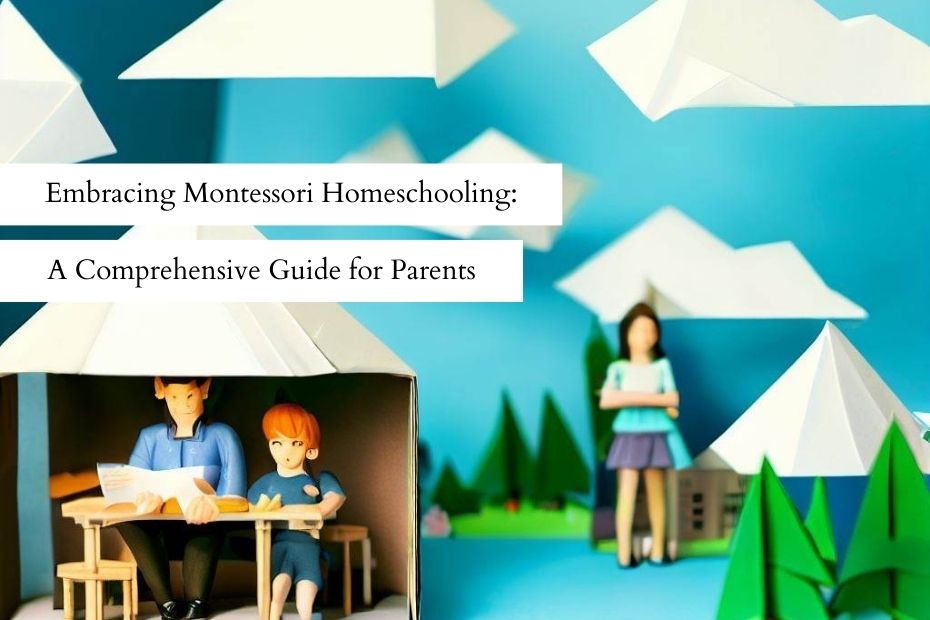Hey Montessori!
When we first embarked on our Montessori journey, we were overwhelmed by the wealth of information and resources available.
But as we delved deeper, we discovered a world of learning that was not only enriching for our children but also for us as parents.
Today, we want to share with you our insights on Montessori homeschooling, a path that many families are considering, especially in these changing times.
Understanding Montessori Homeschooling
Montessori homeschooling is a unique approach to education that combines the principles of Montessori with the flexibility of homeschooling.
It’s about creating an environment that fosters independence, curiosity, and a love for learning, right in the comfort of your own home.
Unlike traditional homeschooling, Montessori homeschooling emphasizes child-led learning, where children are encouraged to explore their interests at their own pace.
And unlike Montessori schools, homeschooling allows for a more personalized learning experience, tailored to your child’s specific needs and interests.
Getting Started with Montessori Homeschooling
Starting your Montessori homeschooling journey may seem daunting, but it doesn’t have to be. Here are some steps to help you get started:
- Educate Yourself: Learn about the Montessori method and its principles. There are numerous books and online resources available to help you understand the philosophy behind Montessori.
- Prepare Your Environment: Create a Montessori-friendly environment at home. This doesn’t mean you need to transform your entire home into a Montessori classroom. Start with a dedicated space for learning, filled with child-sized furniture and Montessori materials.
- Observe Your Child: Montessori is all about following the child. Observe your child’s interests and learning style, and tailor your homeschooling approach accordingly.
Creating a Montessori Homeschool Environment
Creating a Montessori homeschool environment is about more than just choosing the right materials.
It’s about creating a space that encourages exploration, independence, and respect for the child’s natural development.
Here are some things to consider:
- Child-Sized Furniture: Choose furniture that is the right size for your child. This allows them to access their learning materials independently, fostering a sense of autonomy.
- Organized Materials: Arrange materials in a way that is logical and accessible to the child. This helps them understand where things belong and promotes responsibility.
- Natural Materials: Whenever possible, opt for materials made from natural substances like wood or cotton. These materials provide a variety of textures and sensory experiences for your child.
Montessori Homeschooling for Preschoolers
Montessori homeschooling can be particularly beneficial for preschoolers. At this age, children are naturally curious and eager to learn.
By providing them with a Montessori environment at home, you can nurture this curiosity and foster a love for learning.
Here are some tips:
- Practical Life Activities: Incorporate practical life activities into your daily routine. This could be as simple as letting your child help with setting the table or watering the plants.
- Sensory Play: Provide opportunities for sensory play. This could be through sensory bins, play dough, or nature walks.
- Language Development: Encourage language development through reading, storytelling, and conversation.
Montessori Homeschooling vs. Montessori Schools
While Montessori schools offer a structured environment with trained Montessori teachers, homeschooling allows for more flexibility and personalization.
However, it’s important to remember that Montessori homeschooling requires a significant time commitment from parents.
It’s not about replicating a Montessori school at home, but about creating a learning environment that aligns with Montessori principles and meets your child’s unique needs.
Parting Thoughts
As we wrap up, we want to remind you that every Montessori journey is unique. What works for one family may not work for another.
The beauty of Montessori homeschooling lies in its flexibility and adaptability.
It’s about creating a learning environment that respects and nurtures your child’s individuality, curiosity, and love for learning.
Remember, it’s not about perfection but about progress. So take it one step at a time, learn from your experiences, and most importantly, enjoy the journey.
After all, as Maria Montessori said, “The goal of early childhood education should be to activate the child’s own natural desire to learn.”
We hope this guide has given you a good starting point for your Montessori homeschooling journey, and feel free to dive deeper at our homeschooling deep dive to get started.
Stay tuned for more posts where we’ll dive deeper into Montessori materials, activities, and practical life skills. Until then, happy homeschooling!
